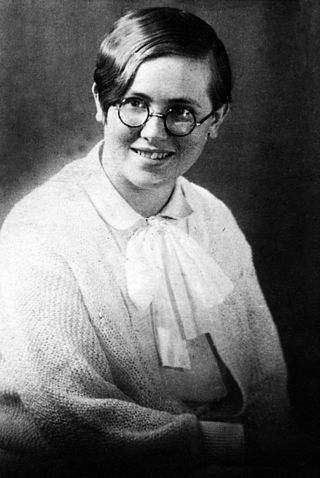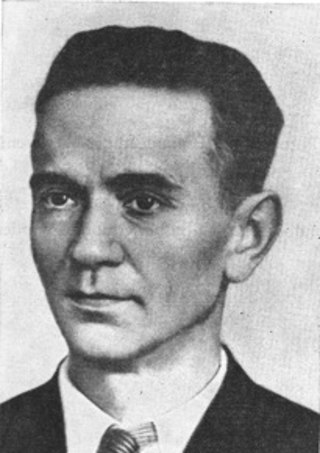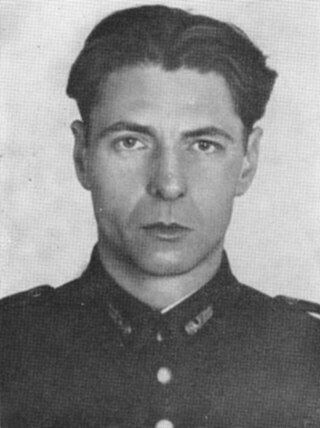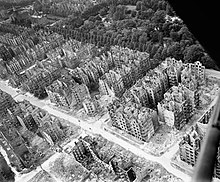
Judith Auer was a resistance fighter against the Nazi régime in Germany.

Bernhard Bästlein was a German Communist and resistance fighter against the Nazi régime. He was imprisoned very shortly after the Nazis seized power in 1933 and was imprisoned almost without interruption until his execution in 1944, by the Nazis. Nonetheless, he was one of the most important leaders of German Resistance.

Anton Emil Hermann Saefkow was a German Communist and a resistance fighter against the Nazi régime. He was arrested in July 1944 and executed on 18 September by guillotine.
The Saefkow-Jacob-Bästlein Organization was an underground German resistance movement acting during the Second World War, that published the illegal magazine, Die Innere Front.

Brandenburg-Görden Prison is located on Anton-Saefkow-Allee in the Görden quarter of Brandenburg an der Havel. Erected between 1927 and 1935, it was built to be the most secure and modern prison in Europe. Both criminal and political prisoners were sent there, as well as people imprisoned for preventive detention or for interrogation and prisoners of war. Built with a capacity of 1,800, it sometimes held over 4,000 during the Nazi era. After the war, East Germany used the prison to incarcerate at least 170,000 people. Prisoners were used for labor, with them making things such as tractors, kitchen furniture, uniforms and radiation suits, electric motors, shoes, and cars.

Franz Jacob was a German Resistance fighter against Nazism and a Communist politician.
Robert Abshagen was a German Resistance fighter against National Socialism and a Communist.

Robert Uhrig was a German communist and resistance fighter against National Socialism.
Katharina Jacob was a teacher and member of the German Resistance movement against National Socialism. She was married to Franz Jacob, a German Resistance fighter who was executed by the Nazis.

John Sieg was an American-born German Communist railroad worker, journalist and resistance fighter, who publicized Nazi atrocities through the underground Communist press and fought against National Socialism in the German Resistance. He was a key member of the anti-fascist resistance group that was later called the Red Orchestra by the Gestapo.

Heinrich Max Willi Sänger was a German Communist and resistance fighter against the Nazis.
Erich Heins was a German communist and resistance fighter against the Nazis and a Nazi Victim.
Walter Bohne was a German communist and resistance fighter against Nazism.
Walter Hochmuth was a German politician in the Weimar Republic (KPD), resistance fighter during the Nazi regime and a diplomat of East Germany.

Martin Weise was a German journalist, member of the Communist Party of Germany (KPD) and a resistance fighter against the Nazis during World War II. From 1929 to 1934, Weiss published the socialist Die Rote Fahne newspaper. He was arrested and sent to a concentration camp until 1939. When he was released, he decided to resist and made contact with Wilhelm Guddorf and the Hamburg based group around Bernhard Bästlein and Robert Abshagen He became associated with an anti-fascist resistance group that was run by Harro Schulze-Boysen and Arvid Harnack, that was later called the Red Orchestra by the Abwehr.
Erna Frida Eifler was a German steno typist secretary who became a communist, resistance fighter, Soviet GRU agent and courier.
White Rose Hamburg was a resistance group working against National Socialism in Hamburg. Those involved did not call themselves that, and for the most part did not see themselves as resistance fighters. The term, used by researchers after 1945, encompasses several circles of friends and family, some of whom had been in opposition to National Socialism since 1936 and who, following the actions of the White Rose in Munich and their continuation, acted against the Nazi regime and the Second World War from 1942. Although many members belonged to an older generation, the group is classified as a youth and student opposition. There were isolated personal contacts with other resistance groups in Hamburg, but cooperation did not materialize.
People of the Saefkow-Jacob-Bästlein Organisation is a list of participants, associates and helpers of the Saefkow-Jacob-Bästlein Organization, which was one of the largest anti-Nazi resistance organisations that came into existence during World War II in Germany. It was formed in Berlin and had contacts to many other regions that hosted industrial manufacturing. It is therefore also referred to in the literature as the operational leadership of the Communist Party of Germany (KPD). However, it was not only communists among the groups of the Saefkov Jacob Bästlein organisation. The 506 known persons included about 200 before 1933 to the KPD, 22 to the Social Democratic Party of Germany (SPD) or to the Socialist Workers' Party of Germany (SAP) and around 200 were non-party; one in four was a woman. 160 men and women were unionized before 1933, more than 60 of them in the German Metal Workers' Union (DMV). The local or region is indicated for the people who worked outside Berlin and Brandenburg.
Marie Priess, was an anti-fascist member of the Resistance movement during World War II and a member of the Red Orchestra organization, an espionage group in Germany.











